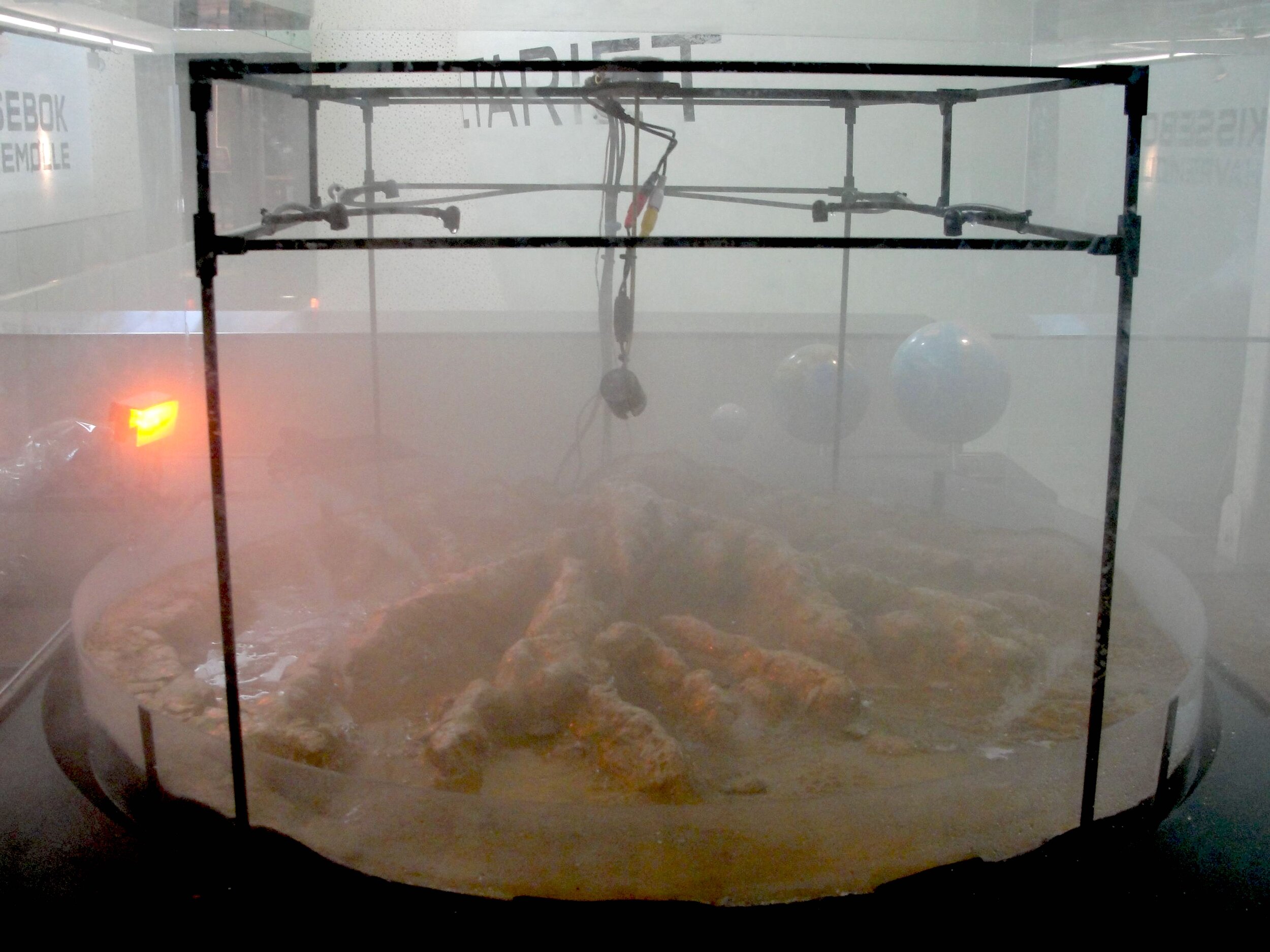xanadu _ 1
Speculation about Titan is rife and imaginations run riot. We see Titan as a proto Earth, and maybe even as a place that could harbour an exotic form of life. All the necessary variables are there, in one form or other. Speculation became so heated in fact, and the need for concrete data so keen that the ESA built Huygens probe that flew with Cassini was landed on Xanadu in 2005. The intention was that the lander would survive long enough to record data and images as it descended through the thick atmosphere. What actually happened was that it survived the whole trip and landed softly on the 'creme brûlée' surface and sat there for 90 minutes taking and sending pictures of a world that was eerily familiar. We never imagined we would find out so much about the surface of an alien world in such a short time.
Titan, the possibilities of life there, the notion of terrestrial life forms colonizing it, the notion of exploration and revelation of distant exotic places have taken root firmly in my considerations of the science of astrobiology and its expression in my art works. While developing my ongoing project 'Drosophila titanus' I found myself more and more imagining the reality of this weird place, its topology, its climate, its exotic extreme cold hydrocarbon chemistry, the sensation of cold and the colour of its atmosphere. Xanadu filled my dreams as it had with Coleridge over 200 years earlier. It seemed not only correct but necessary to try and recreate this place in some way.
So Xanadu would be recreated in a series of scale dioramas from obsessive attention to Cassini and Huygens data, the wealth of maps, charts, radar scans and photographic images at our disposal (and whatever we might think of NASA as an entity we must at least thank them for making so much material publicly available). Ultimately these dioramas would recreate the exact same conditions as they are found on Titan, with cryogenic systems allowing temperatures low enough to allow liquid methane and the formations of organic aerosols such as tholins.
Xanadu_1 – the first in this series – was made as an overview, a visualisation of a 4km radius around the location in which Huygens landed. Dense atmospheric smog, persistent rain and rivulets would be present, but using water in liquid form and ultrasonically produced vapours at room temperature this time.
A remote controlled camera positioned at a certain height and trajectory above the landscape from which Huygens reported back some of its most astounding images allows us to place our awareness momentarily within the descending probe. While our broader attention is directed to the wider landscape before us, the detail of the emerging mountain tops and eroded features begins to become apparent. Our attention is split between the real and the virtual, consistent with our common experience by proxy afforded to us by space probes and planetary landers. We are there and we are not there.



